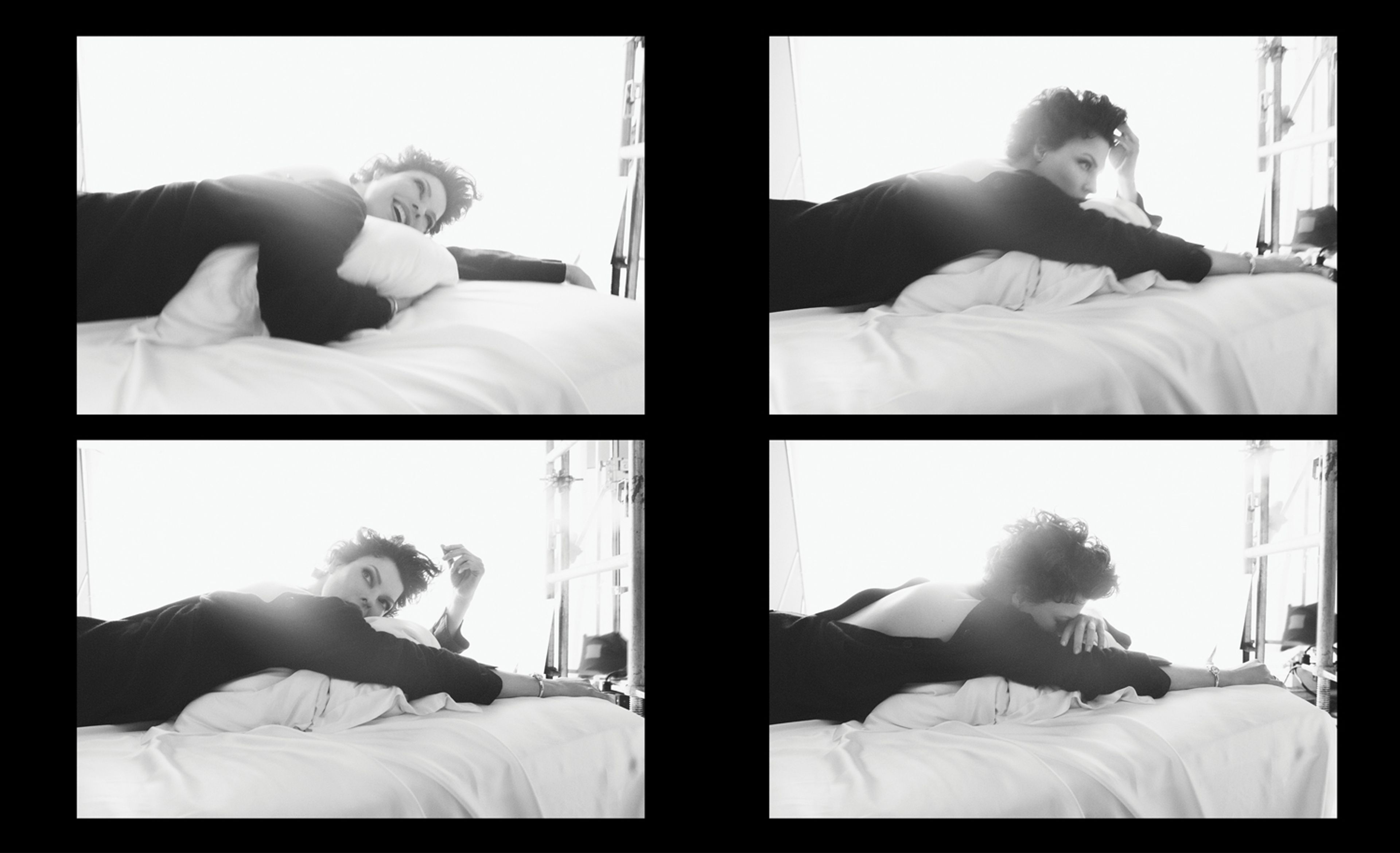The noted supermodel and fashion photographer have been together through it all. Amid Evangelista’s health struggles, the close friends are examining their legacy with a new book.
IN 1988, when she was just 22, Linda Evangelista’s blossoming modeling career was nearly nipped in the bud.
At a shoot, Evangelista gave into entreaties from photographer Peter Lindbergh and allowed hairstylist Julian d’Ys to gather her locks in a ponytail and chop it off. In an era when long hair reigned supreme, the fallout was immediate, she says. While she was en route to Milan for fashion week, a good number of the shows she was supposed to walk in canceled her.
Hearing of her plight, photographer Steven Meisel, who had become close friends with Evangelista since first shooting her a year earlier, called Franca Sozzani, the powerful editor of Vogue Italia. Immediately, the model found herself on a New York–bound Concorde for a shoot in Meisel’s studio.
Steven “came to the rescue,” Evangelista says. In the recollection of hairstylist Jimmy Paul, Linda’s cropped hair caused a sensation when she appeared in a New York show. “It was a revolution,” Paul says. Short hair was now in. Women everywhere wanted “the Linda.”
Evangelista’s hair transformations became the stuff of legend. As one magazine reported, in one five-year period, she changed her color 17 times, and she changed cuts almost as often. Vogue pronounced her “the fashion world’s ultimate hair chameleon.”
Evangelista was a chameleon in other ways, too. “There will never be another Linda,” says the hairstylist Garren. “She could find every muscle in her body…and move it by separating it in her brain. Like with her face, she could stretch the neck, lift the chin, drop the chin, pull the cheekbones in, lift the eye all at the same time.” It was exactly what Meisel had been looking for. “She becomes his muse,” Garren says.
Now “Steven and Linda,” as the pair are known throughout the fashion industry, are exploring their decadelong collaborations with a new book, Linda Evangelista Photographed by Steven Meisel, which Phaidon will publish in September. With an introduction by William Norwich and nearly 190 images—spanning almost 25 years, from 1987 to 2011—the volume illustrates the pair’s symbiosis in the context of fashion history. A preponderance of the images dates from the ’90s, that increasingly mythic decade that saw the rise of the supermodel and the reign of “the Trinity,” the glamorous triumvirate of which Evangelista was part, with Christy Turlington and Naomi Campbell.

Photography by Steven Meisel for WSJ. Magazine / Styling by Karl Templer.
Many of Meisel and Evangelista’s collaborations are seared into fashion-world memory: Besides adding to the canon of classic fashion photography, they seemed to dictate the zeitgeist. In just one of the countless stories they shot for Vogue and its international editions was “Makeover Madness,” a prescient 70-page story focusing on plastic surgery that appeared in Vogue Italia’s July 2005 issue. Their influential ad campaigns included an oft-referenced minimalist shoot for maximalist brand Dolce & Gabbana and a madcap series for Barneys New York in the early ’90s showing a flame-haired Evangelista as the spunky heiress to Lucille Ball.
This month, Apple TV+ is also releasing a four-part documentary, The Super Models, featuring Evangelista, Turlington, Campbell and Cindy Crawford. Even among this starry group, Evangelista and Meisel’s images stand out for their obsessive rigor. Says designer Anna Sui, a close friend, “The two of them did their best work together…. There was really just such magic going on between them. She is such a perfectionist. She pushes herself so hard. I think that was what made her and Steven’s relationship so incredible—she [worked so hard] to capture that mood that Steven was trying to evoke each time.”
“He is fashion,” says art director Fabien Baron. “Steven Meisel has that extra thing…that maybe only [Richard] Avedon and [Irving] Penn had, a knowledge of craft and a knowledge of how to push and to push as far as you can. Right on the verge of, the thing’s going to crack.
“She understands what he is looking for. ‘OK, you want to go there?’ ” he adds.
“It’s like Marlene Dietrich and [the director Josef] von Sternberg,” says Meisel. “You’re creating together—it’s never a solo act.”
Over the years, Meisel has remained as in-demand as ever—he has shot recent campaigns for brands such as Louis Vuitton, Dolce & Gabbana and Valentino—yet outside of work, he seems ever more reclusive. Rarely seen, he’s become a Garbo-like character. Last November, when an exhibition of Meisel’s work opened—a rarity in itself—some 100 guests made the trek to northern Spain to attend its vernissage, including many of his closest collaborators and models, Campbell and Turlington among them. But the artist was not present. (For this rare press interview, and his first-ever with Evangelista, he has agreed to a voice-only Zoom session, from his studio in Manhattan’s SoHo.)
And Evangelista, now 58, disappeared around 2016 from fashion magazines. Five years later, she announced the reason: CoolSculpting, the popular FDA-approved “fat-freezing” procedure, had left her “permanently deformed” and “brutally disfigured,” as she wrote in a statement on Instagram. Her face, her thighs and her abdomen were all affected.
“I loved being up on the catwalk. Now I dread running into someone I know,” she told People in February 2022, when she gave her first interview about the ordeal. “I can’t live like this anymore, in hiding and shame.”

